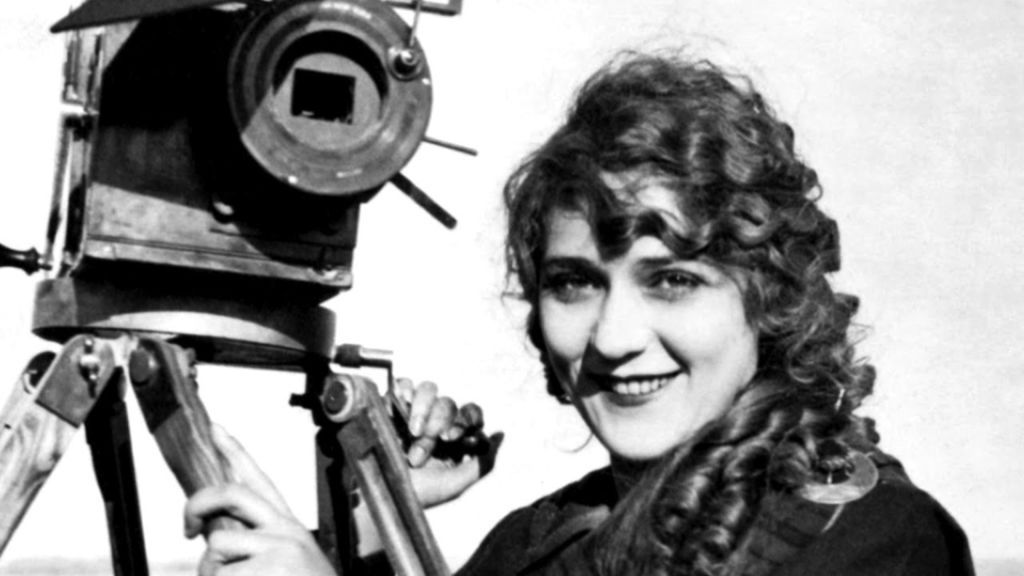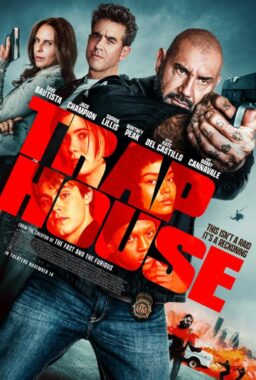Early on in writer/director Damien Chazelle’s “Babylon,” a tribute to the transitional period in Hollywood between the silent era and the invention of synchronized sound, there’s a showstopping sequence that sees two directors—Otto Von Strassberger (Spike Jonze), modeled on actor and director Erich Von Stroheim, and Ruth Adler (Olivia Hamilton), modeled on trailblazing director Dorothy Arzner—making their respective films on the chaotic desert lot of the fictional Kinoscope studios. Yet, later in the film, after the advent of sound, only Adler is seen still working for the studio. Throughout these two scenes, Chazelle also alludes to several other women directors working in Hollywood from the 1910s into the 1920s, including Alice Guy Blaché, Nell Shipman, and Lois Weber, addressing head-on the still-pervasive myth that women were not an integral part of the movie-making business from its very beginning.
As film historian Hilary Hallett, author of Go West, Young Women!: The Rise of Early Hollywood, pointed out in her piece on the film for Slate, “many of the freshest insights from historical research” in the last few decades about the women who worked on the production side in Hollywood can be found in Chazelle’s film. How did this research make its way into a big-budget studio film in the year 2022, and more importantly, why did it take so long for the foundational work of women in early Hollywood to be considered an integral part of film history? To answer this, we have to look back at 50 years of research and scholarship into the contributions of women during the nascence of cinema, as well as a concerted effort towards the preservation, restoration, and presentation of their films.
In 1972, while researching the movies of 1911 to 1920 at the Academy’s Margaret Herrick Library for the American Film Institute, researchers Sharon Smith and Anthony Slide discovered among the trade papers and fan magazines from the era evidence that, contrary to what had been recorded in film history up to that point, many women were actually employed on the production side—especially as directors—during this decade. In her book, Pink-Slipped: What Happened to Women in the Silent Film Industries, Columbia University professor Jane Gaines examines the birth of feminist film studies from this moment on, its triumphs, its failings, and the ever-changing nature of historiography.
This historiography includes the work of scholars and archivists who have spent the last few decades trying to fill gaps in the collective consciousness of film history. Slide published many books on the subject of early women filmmakers, including his 1977 book Early Women Directors, which he revised as The Silent Feminists in 1996. In 1997, Cari Beauchamp’s book Without Lying Down: Frances Marion and the Powerful Women of Early Hollywood not only highlights the life and achievements of two-time Oscar-winning screenwriter Frances Marion (who literally wrote a book called How to Write and Sell Film Stories), but also pulls focus on to the creative contributions of women like Mary Pickford and Adela Rogers St. Johns (who was a major inspiration behind Jean Smart’s character Elinor St. John in “Babylon”), further filling in the picture of just how many women worked behind the scenes in the studio system during the silent era.

The blossoming interest in this field of scholarship led to the creation of Women and Film History International, a consortium of scholars, researchers, archivists, and film programmers dedicated to studying women’s film history. For the last 23 years, WFHI has sponsored a biennial international conference entitled Women and the Silent Screen, specifically aimed at the work done to unearth pivotal contributions by women to early cinema. Here conversations are had about new historical findings, new interpretations of facts, and, most importantly, the energy and shared passion of those who work in this field that helps ignite further discoveries.
The rise of the internet as a way to share information saw the launch of the invaluable database housed within the Women Film Pioneers Project. Originally envisioned in 1993 as a series of books by Gaines, since its launch in 2013, the project boasts in-depth profiles of 313 early film pioneers in global cinema. Recently a partnership with the American Film Institute was announced. The program, called The Women They Talk About, aims to create a broader dialogue about this field of study. Through interviews with scholars and interactive curriculum, the partnership provides teachers and others the resources they need to continue the conversation with younger generations about women’s early contributions to the cinematic arts.
Since 2009, Women’s Media History Now! (originally launched at the University of Illinois Press as Women and Film History International Series) has been publishing books by scholars exploring the work of women in early film across the globe, publishing books include Tami Williams’ Germaine Dulac: A Cinema of Sensations about the trailblazing French director. Exporting Perilous Pauline: Pearl White and the Serial Film Craze, edited by Marina Dahlquist, explores White’s contribution to early action cinema, and Mark Garrett Cooper’s Universal Women Filmmaking and Institutional Change in Early Hollywood investigates the curious case of the rise and later decline of women directors at Universal Pictures in the 1910s—including Lois Weber, who at one point was the most famous director working in Hollywood.
But film is inherently a visual medium, and so in tandem with this ongoing research by academics and scholars, there’s also been a surge in restoration, preservation, distribution, and presentation of these trailblazing movies. This includes the restoration of Weber’s films “Shoes” and “The Dumb Girl of Portici,” both undergone by Milestone Films in partnership with institutions like EYE Filmmuseum in Amsterdam, the British Film Institute, the New York Public Library’s Performing Arts Library, An Affair with Film, and the Library of Congress. These restorations, along with several others of Weber’s films, allow modern viewers to see with their own eyes why she was so lauded in her time. Her mastery of cinema, her fluidity, and her creative use of light and editing all showcase the way her work helped build this language.
In the last five years, Kino Lorber has released two invaluable anthology sets, produced by Bret Wood, composed of other recent restorations and scholarly contextualization. The first, Pioneers: First Women Filmmakers, curated by scholar Shelley Stamp, author of Lois Weber in Early Hollywood, features over 50 films from more well-known directors like Alice Guy-Blaché and Lois Weber, more obscure names like Grace Cunard, Helen Holmes, and Cleo Madison, who helped shape early genre cinema, and star directors like comedienne Mabel Normand, who is remembered today more for her comedic acting alongside Charlie Chaplin and Roscoe Arbuckle than for her work behind the camera. It also features Nell Shipman’s “Something New,” a comedy from 1920 about making movies that Chazelle visually references in “Babylon”’s first scene with Adler.

Last year, Kino released Cinema’s First Nasty Women, a film collection that seeks to highlight the female performers and creators who subverted the very idea of womanhood during their time. Co-curated by Laura Horak, Maggie Hennefeld, and Elif Rongen-Kaynakç, and with titles sourced from over a dozen archives around the world, the set features 99 movies produced from 1898 to 1926, shining a light on forgotten female comedic innovators, like the French comedienne Léontine, whose work in front of the camera shaped the very idea of movie stardom.
Along with home video releases, these films have been programmed by festivals, movie theaters, and universities around the world including the Pordenone Silent Film Festival, San Francisco Silent Film Festival, UCLA Film & Television Archive, and BAM Film Brooklyn. Many of them aired on Turner Classic Movies in 2015 as part of their Trailblazing Women in Film partnership with Women In Film, as well as other programming initiatives, including Silent Sunday Nights, hosted by Academy Museum of Motion Pictures Director and President and film scholar Jacqueline Stewart. A selection of the restorations has even been made available on streaming services like Criterion Channel and Netflix, bringing their exquisite artistry, hilarious comedy, and innovation to a new generation of movie lovers.
Through this access to these movies—on the big screen, DVD/Blu-ray, or streaming—that film lovers can truly understand the impact of their work on the cinematic arts, as well as the decades of work done by those who have worked to preserve it. And with contemporary films like “Babylon” and characters like Ruth Adler further reiterating that women have always been behind the camera, perhaps this history will continue to inspire more women to take up the camera and make films, whether the studios support them or not.
So, here’s to the women who helped define film comedy, taught the nation how to collectively cry over melodramas and sigh over romance, thrilled us with their daredevil stunts, and who mapped their dreams on celluloid, and to the hundreds of tireless scholars, researchers, archivists, preservationists, curators, and programmers who’ve kept those dreams alive.












